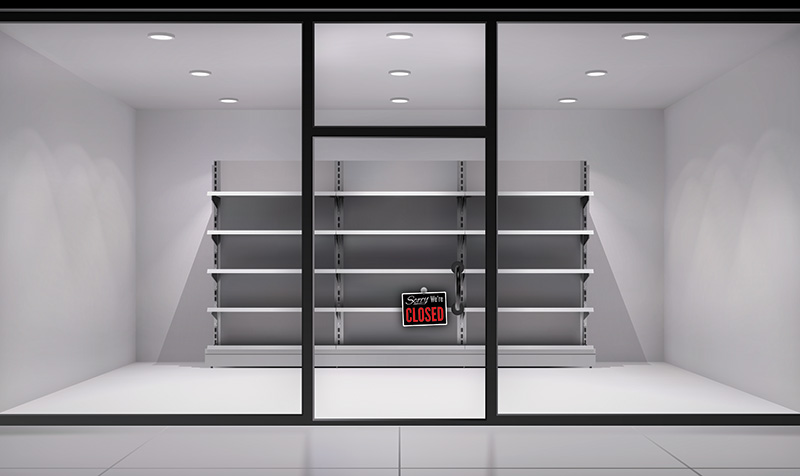By Leonora Desar
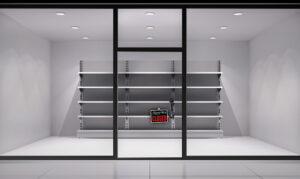 We’ve read about it in the news: retail stores, which some lighting manufacturers rely on for their bread and butter, are closing at an alarming rate. Macy’s has announced that approximately 100 of its 650 locations are shuttering their doors, and JCPenney has plans to close 138 locations. In January, Sears announced that it would shut down 42 Sears and 108 Kmart stores, and H.H. Gregg, which has filed for Chapter 11 bankruptcy, has announced plans to turn the lights out at 88 locations. All told, Bloomberg estimates that more than 8,000 stores in the U.S. could shut down in 2017.
We’ve read about it in the news: retail stores, which some lighting manufacturers rely on for their bread and butter, are closing at an alarming rate. Macy’s has announced that approximately 100 of its 650 locations are shuttering their doors, and JCPenney has plans to close 138 locations. In January, Sears announced that it would shut down 42 Sears and 108 Kmart stores, and H.H. Gregg, which has filed for Chapter 11 bankruptcy, has announced plans to turn the lights out at 88 locations. All told, Bloomberg estimates that more than 8,000 stores in the U.S. could shut down in 2017.
Is this the death knell for the retail lighting world?
“The [lighting manufacturers] that will succeed are going to deemphasize the products that go into slowing markets and will find new opportunities for things they can do,” says Phil O’Donnell, senior VP of global sales at Cooledge HQ. “There’s nothing unique about this in the lighting industry— the creative ones will succeed and others will find things increasingly difficult.”
The news isn’t all bad. There are several niches within retail where lighting is used now more than ever to draw people in, such as in grocery stores or high-end retail, which is thriving. “Everyone has to look for where there’s growth,” O’Donnell says. “There will be less retail space, but chain stores and shopping mall tenants are for the most part not the types of clients who are installing high-end lighting systems. And while there’s this battle between e-commerce and brick-and-mortar, there are always people who want that physical shopping experience.”
 OPPORTUNITY KNOCKS
OPPORTUNITY KNOCKS
To make their stores appealing to shoppers, high-end retailers are experimenting with illumination. They aim to create a sensory experience, from architectural lighting effects to mirrors that show customers how an outfit looks in different color temperatures, from a day at the beach to dining by candlelight. “Instead of lighting a bunch of shelves we help tell a story about a product or brand,” says Brett Andersen, principal of Focus Lighting. “It boils down to adding an experience that’s more than walking through a store and seeing things in boxes.”
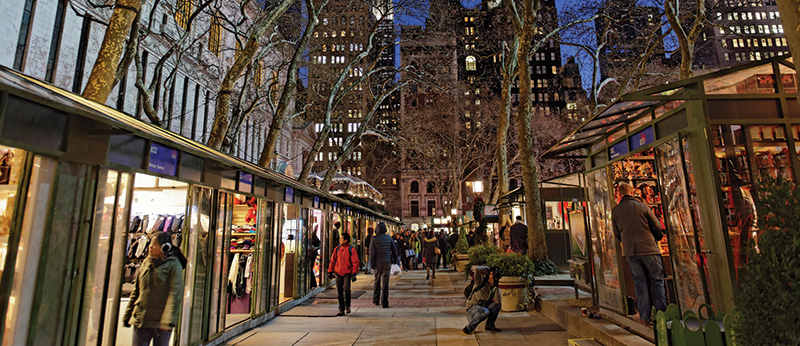
To remain competitive, designers and manufacturers will have to up their game—especially when it comes to creating scenarios that are memorable on social media platforms such as Facebook. “It’s about designing moments that people want to share online for social currency,” says Caprice Johnson, marketing coordinator at Focus. “As we’re planning a store we’re thinking of all the areas to create those opportunities for an Instagram moment to happen. It shouldn’t be random but designed with careful placement of product and brand.”
The pop-up store also presents opportunity. A retailer may create a temporary store before investing in a permanent one to drum up business, to generate support for online business, or to reach a local audience without a permanent location. The lighting is designed to be generic and adjustable, affording a challenge to designers. “With a fixed store you know what’s being displayed in what area,” says Archit Jain, principal of Oculus Light Studio. “With a pop-up store you have no idea.”
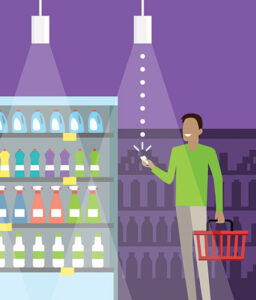
In addition, demand in other market sectors could offer a soft landing, as most of the products that are in a mainstream retail environment are just as applicable for other uses, from office space to hospitality to cruise ships. “In a large upscale Class A commercial building, conference rooms are using accent lighting to wash walls or accentuate graphics,” says Ted Konnerth, CEO & president of Egret Consulting Group. “The retail market is definitely going to soften, but anything you would find in a retail store is transferrable to a decent quality commercial building.”
One should also think outside the box, to arenas where lighting does not have a history of taking center stage. Bowling alleys are now the trendy place to take your date on a Saturday night. Along with a bevy of young singles, one can also find lighting that sets the mood. “They used to be the most horribly lit venues,” O’Donnell says, “but now you have architectural lighting systems that really affect the atmosphere.”
The key for manufacturers is to remain flexible, both in tapping different markets and in being able to adapt one’s product. “A lot of manufacturers are supplying what they call built-to-order, not 50 fixtures sitting on a shelf,” says Bernard Bauer, principal of Integrated Lighting Concepts. “Manufacturers that can do quick turnaround and provide a more customized product have the edge.”
There’s also an ironic side effect of more ecommerce at the expense of retail: Lighting manufacturers can expand their own businesses online, says Earthtronic’s Kevin Younquist. Forest Lighting’s Jian Li agrees that more transparency online means more educated customers.
 SAVVY MANUFACTURERS
SAVVY MANUFACTURERS
Manufacturers in the IoT market will also have an edge. Now more than ever, retailers are using connected lighting to trim operational costs and create an interactive experience for customers. For instance, Simon Property Group is currently piloting a new solution for intelligent energy management at The Westchester Mall in White Plains, NY. The solution, created by Current, powered by GE, can be used by retailers to see where energy is being used in real time.
“With the struggle of stores closing every day, customer service becomes critical,” says Ashmi Pancholi, product marketing leader of Current.
“We’re not going to see retail stores go away—it’s really all about making the ones that the retailers do have a seamless experience for customers. All this data and intelligence can help them provide that customer service, and also give them the insights they need to build a store that’s going to drive customer loyalty.”
Smart lighting can provide a myriad of benefits, from helping retailers create a personalized shopping experience to tracking which areas are hot spots in a store. Take Acuity Brands’ Indoor Positioning System, for instance. The system draws on two technologies—visible light communication (VLC) and Bluetooth. VLC uses a mobile phone’s front-facing camera to look at the light fixtures in line of sight. Each light fixture modulates at a very high frequency, so that the naked eye cannot distinguish it, even though the phone’s camera can. The fixture acts as a beacon within the store, positioning one’s phone within the space and allowing a customer to search easily for items. “Retail environments like groceries and big box are dense,” says Vinod Kashyap, director, IoT product market of Acuity Brands Lighting, Inc. “It’s not helpful to know just what aisle something’s in. This is where VLC helps a lot—it puts you within 4 in. of that item.”
To shop more quickly, you can put in a shopping list and the app will give you the most seamless route. If you still need assistance, you can tell the app you need help, and an associate will be able to track you down, even if you continue wandering through the store.
It also lets store employees know when you don’t want help. “If you are in a high-end retail environment, let’s say jewelry or watches, the challenge for retailers is knowing when to engage the customer and when to back off,” says Kashyap. “When you’re ready to ask a question it will send notice to the associate that you would like them to approach, rather than them not knowing when you need that assistance and hovering.”
 BIG DATA
BIG DATA
The technology also helps retailers with business intelligence. An analytics platform shows the retailer the hot spots within the store. “If they create a new endcap they’ll know how many people actually stopped at that endcap for more than 15 seconds,” Kashyap says. “We can do that because the mobile phone is in that space—if the mobile is there more than 15 seconds we can accrue that into a hot spot. Now retailers can understand, ‘I have this many hot spots in the store, for some reason people like this area, they’re stopping here, they’re not stopping there.’ Retailers can also see if I walk to electronics to let’s say the baby aisle—if I’m doing that often enough they may provide me certain types of coupons.”
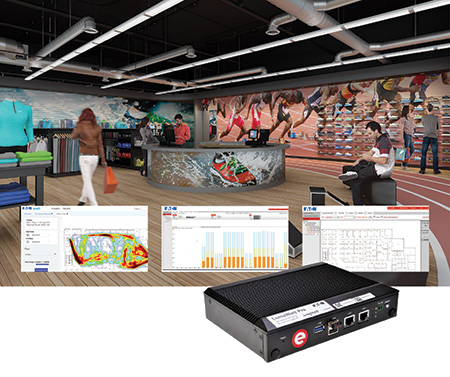
Retailers can also put Bluetooth tags on higher value items to track assets, and use indoor positioning technology to help new employees master the learning curve. “Let’s say I’m a first-time seasonal employee in a retail environment and I don’t know where anything is,” Kashyap says, “but I have an app that tells me I have a cart full of things—now I know exactly where their location is. I will be just as efficient returning all of those things to where they need to be as someone who’s been working in the store for years. That’s actual dollars and cents savings to the retailer.”
IoT technology is also a way for manufacturers of retail lighting to add value for their clients. “The smart lighting world is definitely something that’s here now,” says Joe Bokelman, marketing manager, ambient lighting and systems solutions at Eaton. “If a lighting manufacturer can access this technology it makes them more relevant, because they can fall in line with what the retailer wants to do to stay relevant. It’s a symbiotic relationship.”
Manufacturers aren’t the only ones who can leverage the impact of connected lighting in retail. Paul Mercier of Lighting Design Innovations says it’s incumbent upon designers to educate themselves about sensor technology and convey that knowledge to their clients. “We have to tell clients that when they’re installing fixtures with sensor technology that they can actually expand its use,” said Mercier, when interviewed for LIGHTFAIR’s “Thought Leader” series. “As an organization, we believe that a lot of what takes place [with sensor technology] is application driven. Not just the lighting application and how we do the design, but how it influences retail marketing, the office environment, etc. It’s really going to be part of the future of a lighting designer to incorporate this technology in a way that benefits clients.”
All of which means that IoT will blur the lines of job descriptions. “Barriers that existed for decades are now starting to get a little squishy,” says Konnerth. “[Designers] will have to do homework on technical stuff they have never faced before. They should be the advocate for the client, and if the system is being integrated into IoT and data aggregation, they at least have to have working knowledge of that.
“We’re all learning,” he adds. “It’s going to be fun.”

